
“People who love to eat are always the best people.” Julia Child
As we prepare for feasts and gatherings of friends and family this week, I thought it also a good time to share experiences related to eating in China. Most cultures, certainly people, relate best over food and the Chinese love food! Though sometimes the food may be unfamiliar, or even shocking, the joy and hospitality that is served along with it is universal.
I’ve written before about the abundance of things found in China and food is no different. Within two blocks of our apartment, there are 20 restaurants offering up an array of Chinese, Taiwanese, Korean, Japanese, and Western-style food.
Chinese meals are always (ALWAYS) served family style. This means you order for the table and the food comes out one dish at at time, in what ever order it was prepared, and is placed in the middle of the table for all to share. Rice doesn’t usually come with your meal but instead at some point after you’ve eaten most of the other dishes. Each diner is given a small plate, small bowl, spoon, and chopsticks. Etiquette has you pick from the dish in the middle and then bring it to your plate before eating it. Nobody really fills up their plate first like we would in the United States. Just pick up the food with your chopsticks, briefly hover it above your plate, and then eat!
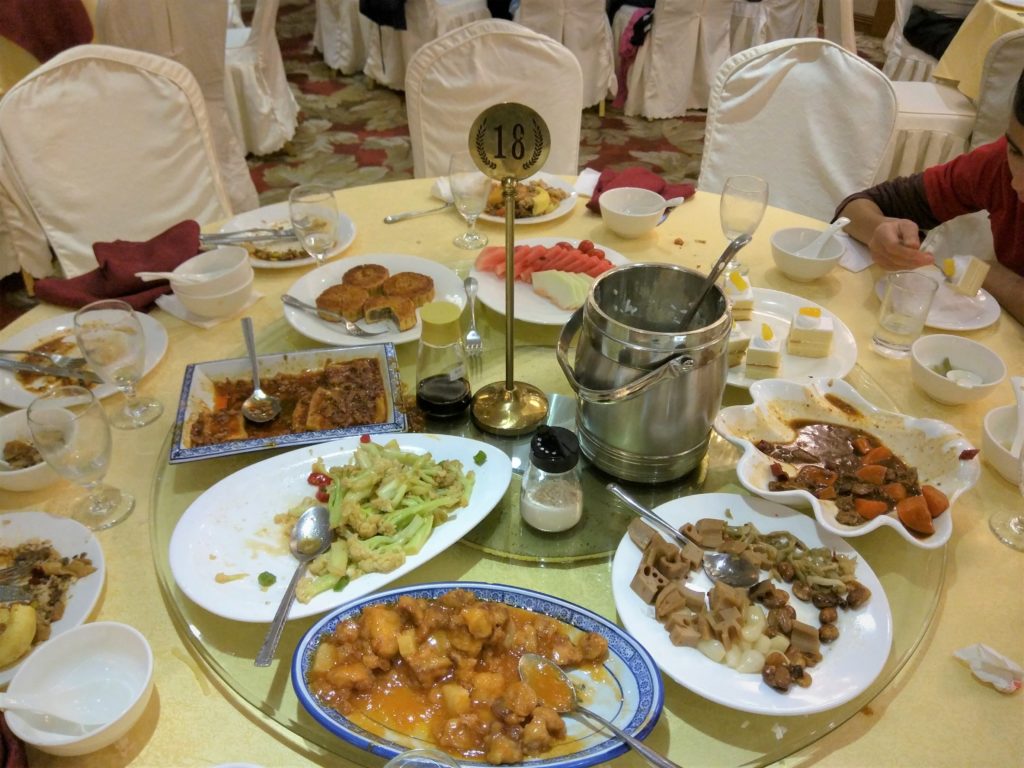
Warm water, in some cases very diluted warm water tea, is given before a meal and one usually never drinks during a meal, unless of course it’s beer.

We are in China and so,of course, 99% of the menus are in Chinese. This is another example of the ever-present language barrier. In Italy you may encounter a menu with an item like Filetto di manzo con funghi. You might be able to work your way around that with some rudimentary understanding of Italian. In China, a menu item would instead read 糖醋里脊.
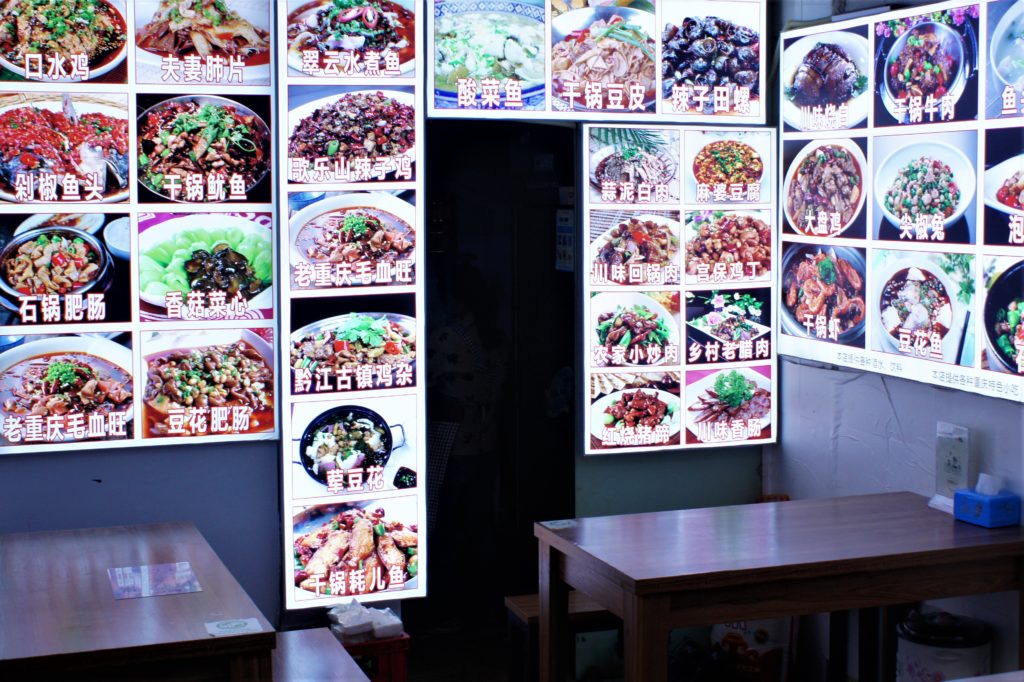
Without a Chinese speaking dinner companion, you are usually limited to ordering what you can see through the photos on menus. Thank goodness for photos! Though not fool-proof (the content of the dishes may be just as unusual to us as the Mandarin characters) they are helpful.

Restaurants that often serve Americans try to accommodate by providing sometimes-helpful English translations of menu items. I’ve seen a few that have made me either laugh out loud, decidedly determine not to eat it, or wonder about my knowledge of geography. Does grass grow in Antarctica?


English translations in China are often funny and a certain subject of another post. Sticking to the subject of food, it is always best to be thorough in your review of the translation. For example, you might see a sign advertising juice and think, “Mango juice! I wonder what else they have.” Um. Corn juice?
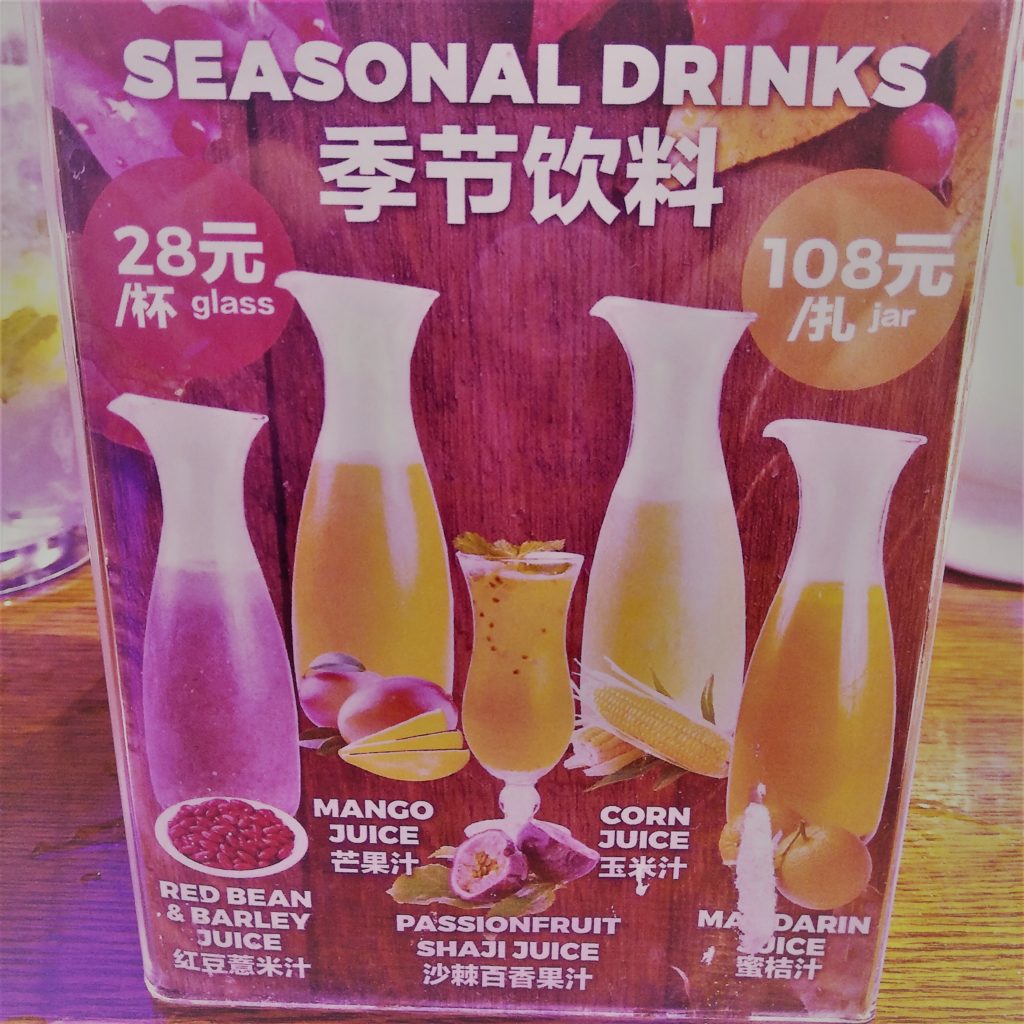
Or you may be presented a package of almonds. You look at it and read seaweed flavor. Then you notice that the little green image on the package is not of a sea plant, but a fish.

We pay close attention to ingredients because Marco has a peanut allergy. We have been dismayed to find peanuts everywhere here. This country LOVES peanuts! Knowing how to avoid them in food is a bit tricky, but we’ve managed. It’s easy to tell when they are just tossed on top of or are presented whole in food. We had a lettuce salad once that was covered in creamy peanut butter. Recently, we ate at a noodle house that had a pick your own ingredients bar – similar to a salad bar. Each of us picked our ingredients and put them in the bowl then handed them to the chef. A few moments later we got our bowls back with a creamy broth. Marco asked me to taste it as we didn’t know what the creaminess came from. It did taste suspiciously like peanuts. I (thank you Google Translate) asked the manager who told me that they stir peanut butter into all their broth before serving. So much for nurturing a sense of adventure in Marco’s eating.
Then there is street food. Jeff does love to experiment with food and has less inhibition than I for getting vendors to cook up things upon request, all without speaking a word of their language. We have a night street food vendor near us where Jeff loves to get fresh made noodles and rice with his choice of ingredients such as whole fish, pigs feet, or various animal organs.
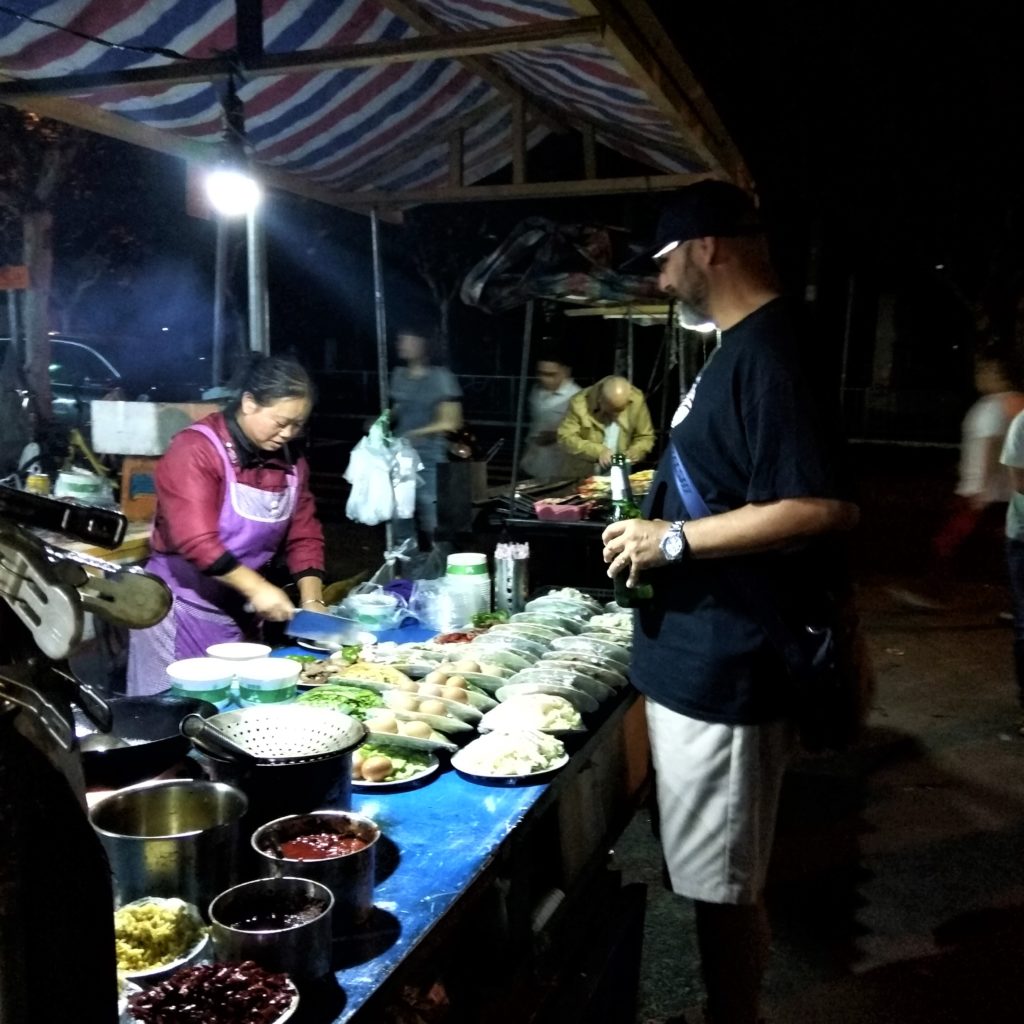
Just as in labels and menu translations, it always pays to be attentive at food stalls. You might be standing and admiring a street side kebab stall when you realize that the pieces of meat on the sticks may not be just chicken and pork.
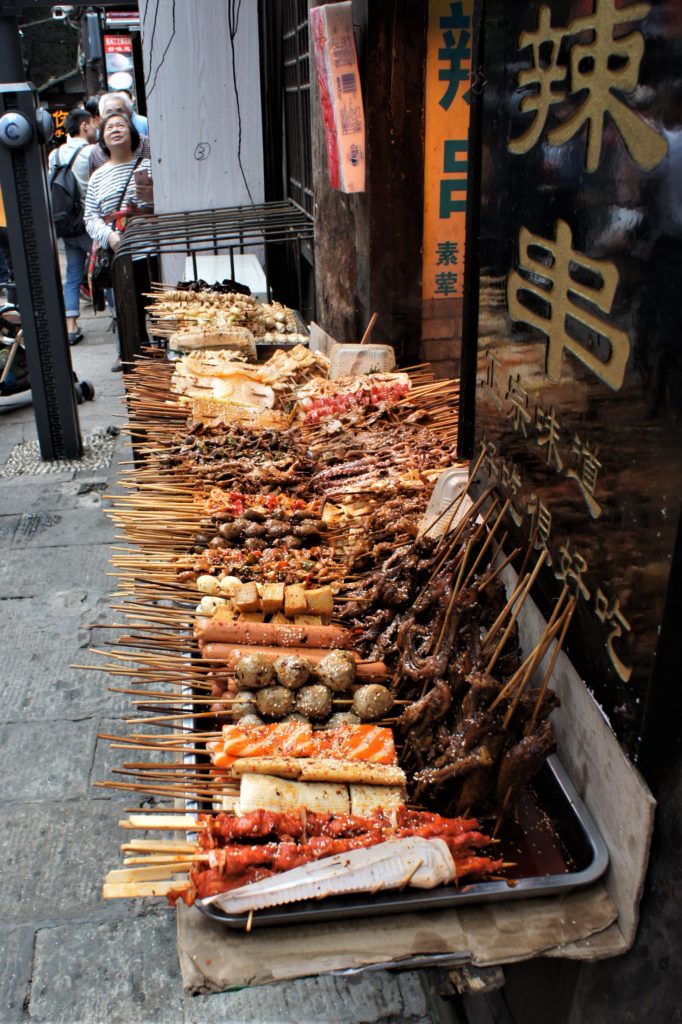

We had dinner out the other day with a young couple we’ve befriended. The husband is British, and his wife, a lively conversationalist and fellow foodie, is Chinese. I asked her about my experience seeing some type of roasted animal heads with big teeth at a food stall. Her eyes widened in excitement and she exclaimed. “Oh I love roasted rabbit heads!” I kept my face politely composed as I asked how one goes about eating it because it seemed an awkward process to me. She said, “Oh you just crack the skull and then suck out the brains. It is SOOOOOO good!!”
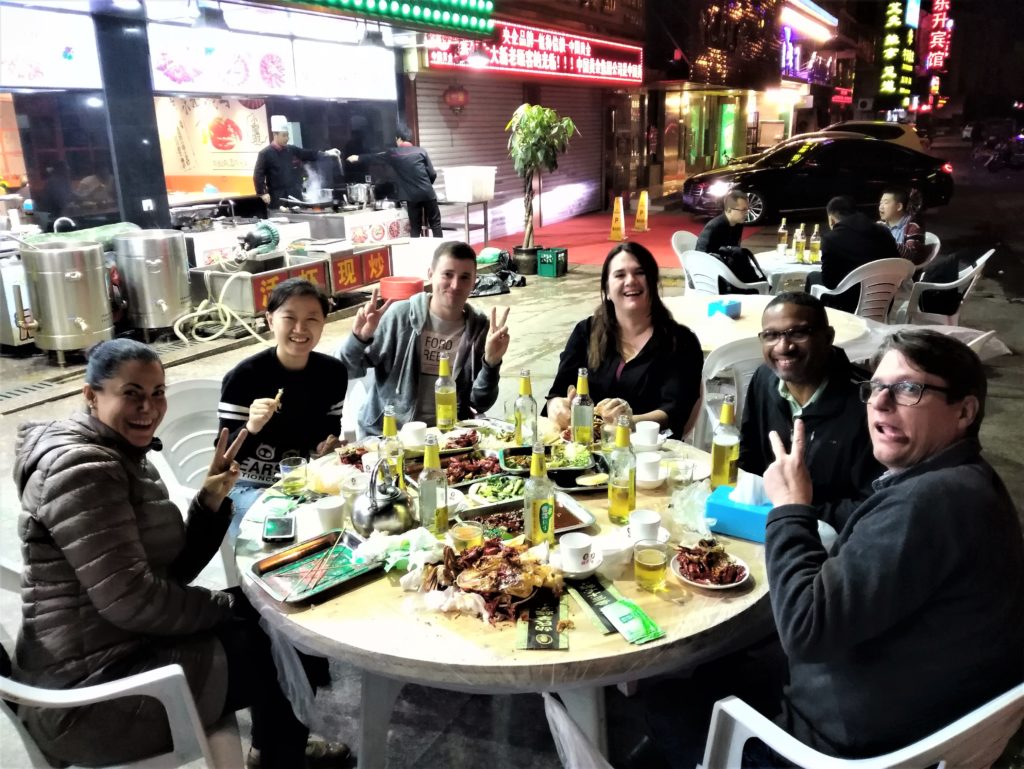
Let’s all rejoice in food this week! Food brings us together and that is something for which we are thankful.
